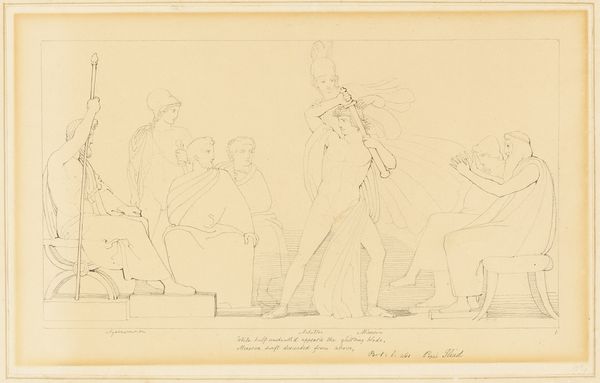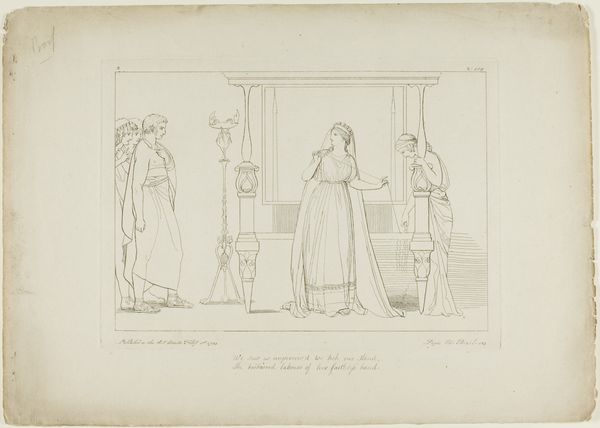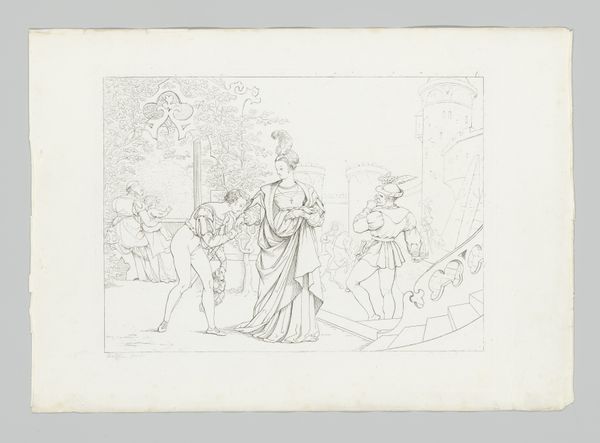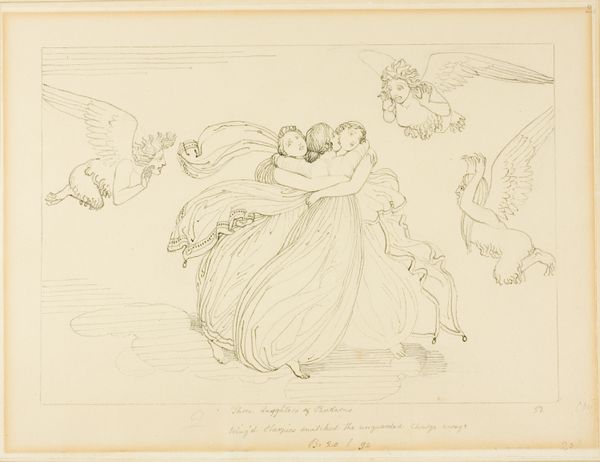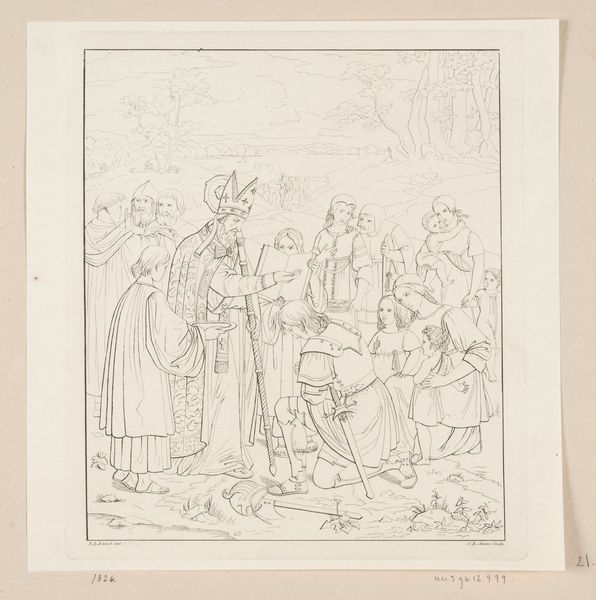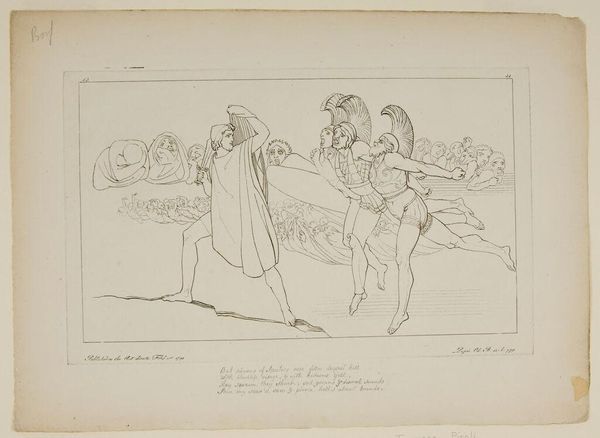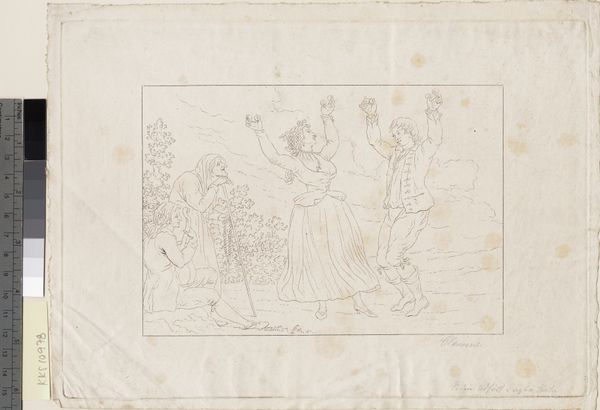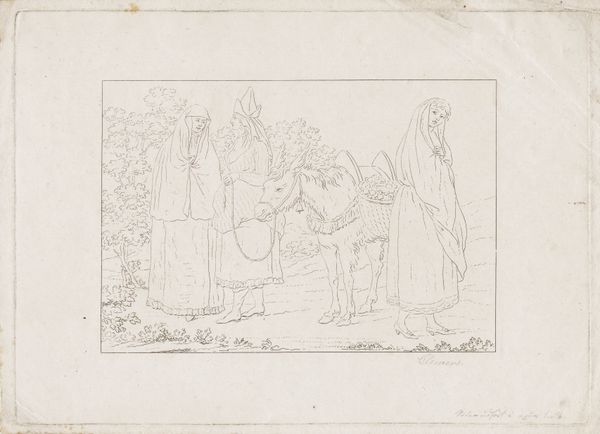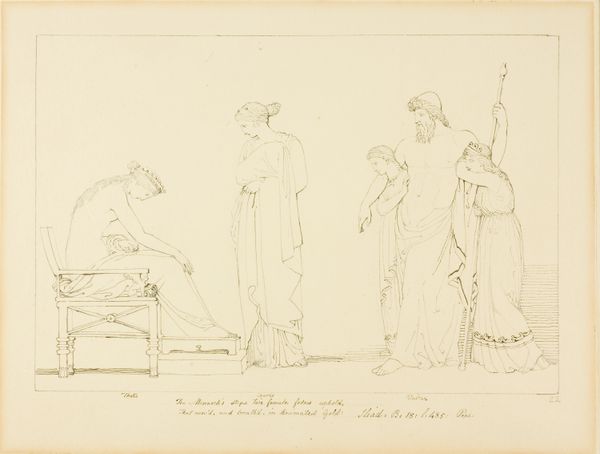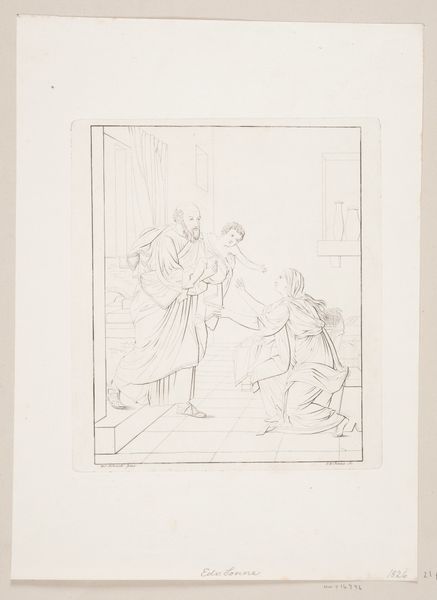
drawing, print, etching, paper, ink, pen
#
drawing
#
allegory
#
neoclassicism
# print
#
etching
#
greek-and-roman-art
#
etching
#
figuration
#
paper
#
ink
#
sketchwork
#
line
#
pen
#
history-painting
Dimensions: 209 × 371 mm
Copyright: Public Domain
Curator: Look at this striking ink drawing by John Flaxman, "The Council of the Gods," which you can find here at the Art Institute of Chicago. What’s your immediate reaction to this work? Editor: There's a surprising airiness to it. The figures are rendered with such delicate lines, it almost feels like they might float right off the paper. Curator: Absolutely, and that's partially due to the Neoclassical style, heavily influenced by Flaxman's extensive study of Greek and Roman art. But, it's essential to look at the political climate during its creation. The French Revolution deeply impacted Flaxman and many artists of the time, fostering a renewed interest in civic virtue and moral authority. Consider how the very idea of a council connects to contemporary events. Editor: I see that. Structurally, the composition is quite fascinating. Flaxman uses a very linear style, with minimal shading, emphasizing contours to define form, yet creating spatial depth. How does the use of line contribute to its overall meaning? Curator: Flaxman intentionally rejected the extravagance of the Rococo, favoring instead the supposed purity of line associated with classical antiquity. This deliberate choice carries a heavy symbolic weight, echoing a longing for order, rationality, and the ideals of a republic. The narrative suggests an effort to establish ethical consensus and societal governance in his own historical context. Editor: Interesting! So even the apparent simplicity is deliberately chosen. It’s this bare, unadorned depiction that gives the subject matter such immediacy. How fascinating that the visual choices give such a strong impression. Curator: Exactly! We can also read it alongside texts by thinkers like Mary Wollstonecraft, who called for reason and virtue in public and private life. Flaxman's neoclassical approach resonates with calls for social reform, aligning artistic expression with broader political aspirations for equality and justice. It's really so interesting to look closely! Editor: The piece leaves me admiring its efficient representation—such delicate linework for such grand subjects! Curator: And for me, a reminder that art isn’t made in a vacuum. We see echoes of the past and urgent cries for a better future embedded within it.
Comments
No comments
Be the first to comment and join the conversation on the ultimate creative platform.
